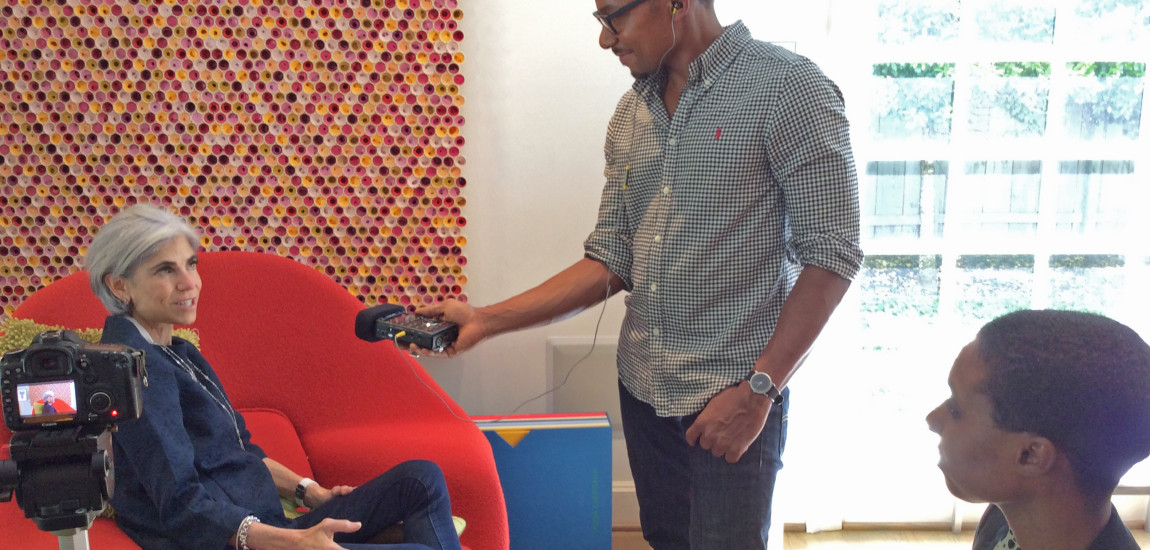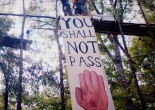
We Are All Folkloric

By Michael McFadden
Pictures courtesy of Folklore Films
Across the United States (and probably around the world), there’s a shift taking place. Moving away from the celebrity gossip that prevails in our own culture and others, projects are popping up in different cities to draw attention to the people who make local communities what they are. From Brandon Stanton’s “Humans of New York” to Natalie Champa Jennings’s “A Face Project” in the Twin Cities, these projects work to draw people’s attention to the amazing folk right in their own backyard. This idea is something that Houston has needed for a long time. Responding to that need is Folklore Films.
Aggravated by the way people in and out of the city perceive Houston, Folklore Films, co-founded by Danielle Fanfair and Marlon Hall, seeks out individuals in the Houston community who work to improve our city in a variety of different ways. “We love our city, and Houston tragically tells the worst stories to itself about itself,” said Hall and Fanfair in a joint email interview with Free Press Houston. Funneling their irritation with the city’s low self-esteem into something more positive, Hall and Fanfair used money from a Houston Arts Alliance grant to film a series of visual poems that give our community something to feel good about, something to be proud of. Although all the money from that grant was eaten up by their first film, Hall and Fanfair have continued the project out of pure love for their city driven by the belief that these stories must be told and that people must learn from and be inspired by them. “The goal of the films are not to highlight someone else’s celebrity, but to authenticate what is folkloric about all of humanity.” This shift away from the adoration of celebrities on a national or international scale allows the visual poems to equip viewers with the tools to uncover what truly makes everyday humanity folkloric.
Beyond providing the equipment, the films present an opportunity for the community to become more intimate and interwoven. “In addition to telling these stories, our intent to is premiere them in pairs to cross-pollinate the communities of the folks being featured. We know that there are people who share values and heart in the city who do not share zip codes or cultural backgrounds.” The screenings allow these people to come together, learn more about the city, and even network in order to work together in the future. An amazing example of this cross-pollination came from the screening of the visual poems “In Power,” which focused on Dan Houston of the yoga non-profit In-Powered, and “Broken to Bucha,” which told the story of Robert Lopez’s injury leading him to Kickin’ Kombucha. During the artist talk, Houston and Lopez decided to find a way to collaborate, resulting in a flavor of Kickin’ Kombucha inspired by the non-profit’s work - “Gingerberry In-Powered” - with a portion of the sales going to aid In-Powered in its mission.
Although on the surface the films may seem like mini-documentaries, a deeper look allows the viewer to see the true poetry of the pieces. “We first heard of the Visual Poetry concept while talking to a local photographer, Brian ‘PlutoLenz’ Ellison, who was toying with the idea of calling himself a visual poet.” The idea didn’t stick for Ellison, but the idea of being “visual poets” truly resonated with Fanfair and Hall. Recycling his discarded title, the pair started to bring poetic concepts into the visual aesthetics of their work.
While documentaries traditionally follow events in chronological order, Folklore’s style of visual poetry doesn’t adhere to a linear structure. Each piece in the series is a narrative that tells the story of the featured individual, but beyond that, it moves between stanzas, “and the goal of the films is to be less like a novel driven by chronological events on a line and more like a sonnet driven by our shapeless love for the subjects and the pain turned promise they express in the interviews.” Driven by the emotional aesthetics of the piece, the story is altered as the narrative dances between the layers that the artists have added to the films, from the music, originally arranged for each film by Michele Thibeaux, Amir Bel-Ami, and Denis Cisneros, to Hall’s communicative style of camerawork.
Marlon Hall, a lecturer and Visual Anthropological fellow at Duke University, allows the camera to become a part of himself, extending from his interest in the behavior and beauty of human beings. “When we have conversations with each other, our heads don’t sit on a tripod bound by one angle, so why should the camera?” explained Hall. This aspect of Folklore’s Visual Poems becomes apparent as soon as the films begin, with the camera’s movements flowing so naturally that they lend themselves to the sensation of being in conversation with the subject, feeling their story instead of just hearing it.
To find out for yourself what makes Hall and Fanfair’s visual poets and find what makes our city folkloric, maybe even unveiling your own folklore in the process, check out Folklore Films’s next screening May 31 at New Living. In this screening, the pair will show films featuring the stories of Judy Nyquist, a contemporary arts patron and maven in Houston, and Jeff Kaplan, who founded New Living-a store dedicated to healthy, sustainable and affordable design. While the inspiration of these and past pieces runs in the same vein as other projects around the country, it is Folklore’s combination of storytelling, humanity and inspiration that sets the pair’s work apart and allows viewers to delve within themselves to discover their own folkloric qualities.
One Response to We Are All Folkloric
You must be logged in to post a comment Login





Great to see more people occupying this space. The city’s low self-esteem is reflected in many of the digital publications through their focus on celebrities and topics that have nothing to do with Houston.
This city has many talented people and interesting subcultures and these stories should be told through video.